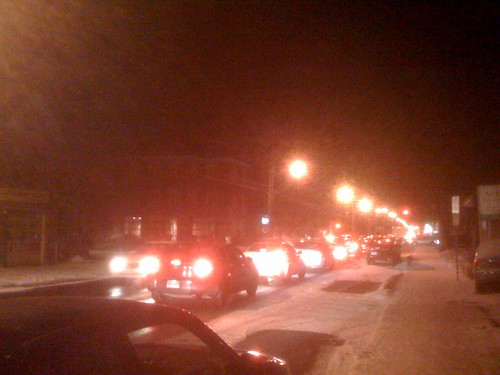Ottawa is facing a transit strike as early as wednesday, and one of the city’s suggestions for getting around mentioned is to cycle. The Sun spoke to CfSC Past-President (and CiO comments regular) Charles Akben-Marchand for tips on biking in the winter.
One of the tips given by the city to stranded bus riders is to try cycling.
Charles Akben-Marchand, past president of Citizens for Safe Cycling, said that while winter cycling might not be for everyone, it is certainly a viable option for those left without a ride.
ICY CONDITIONS
He suggests that bus riders who choose to take their bikes instead should keep in mind that the roads are icy and snow covered and that knobby tires are best suited for slippery situations.
Akben-Marchand said to try cycling on the route you are going to take to work on a day off so that you know how long it will take, keeping in mind it will be slow going for cyclists just starting out after retiring their bikes after the summer.
“It’s harder to adjust to starting cycling in the middle of the winter than if you were doing it every day,” said Akben-Marchand.
Now, I live and work downtown, so put my bike away in the winter, but am secretly envious of those that do continue to bike when the weather gets colder. In centretown, at the very least, the roads are kept clean enough that, except when it is actually snowing or freezing rain, conditions don’t seem that much different than in the rest of the year; on the other hand, I fear what the salt will do to my commutting bike (and have a hard time justifying a winter beater.)

More importantly, with the (temporary) closure of a bridge to Gatineau, traffic downtown was absolutely crazy last week- on Friday, Gladstone (see above) was bumper to bumper -something I haven’t seen in the four years I’ve lived here. Even side streets like Bay and Percy were much busier than usual. With a transit strike, things will only get worse. Conditions might be less than ideal, people will be frustrated, and probably (and sadly) unlikely to expect bicycles. So, do leave lots of time and be safe if you do bring out the bike.